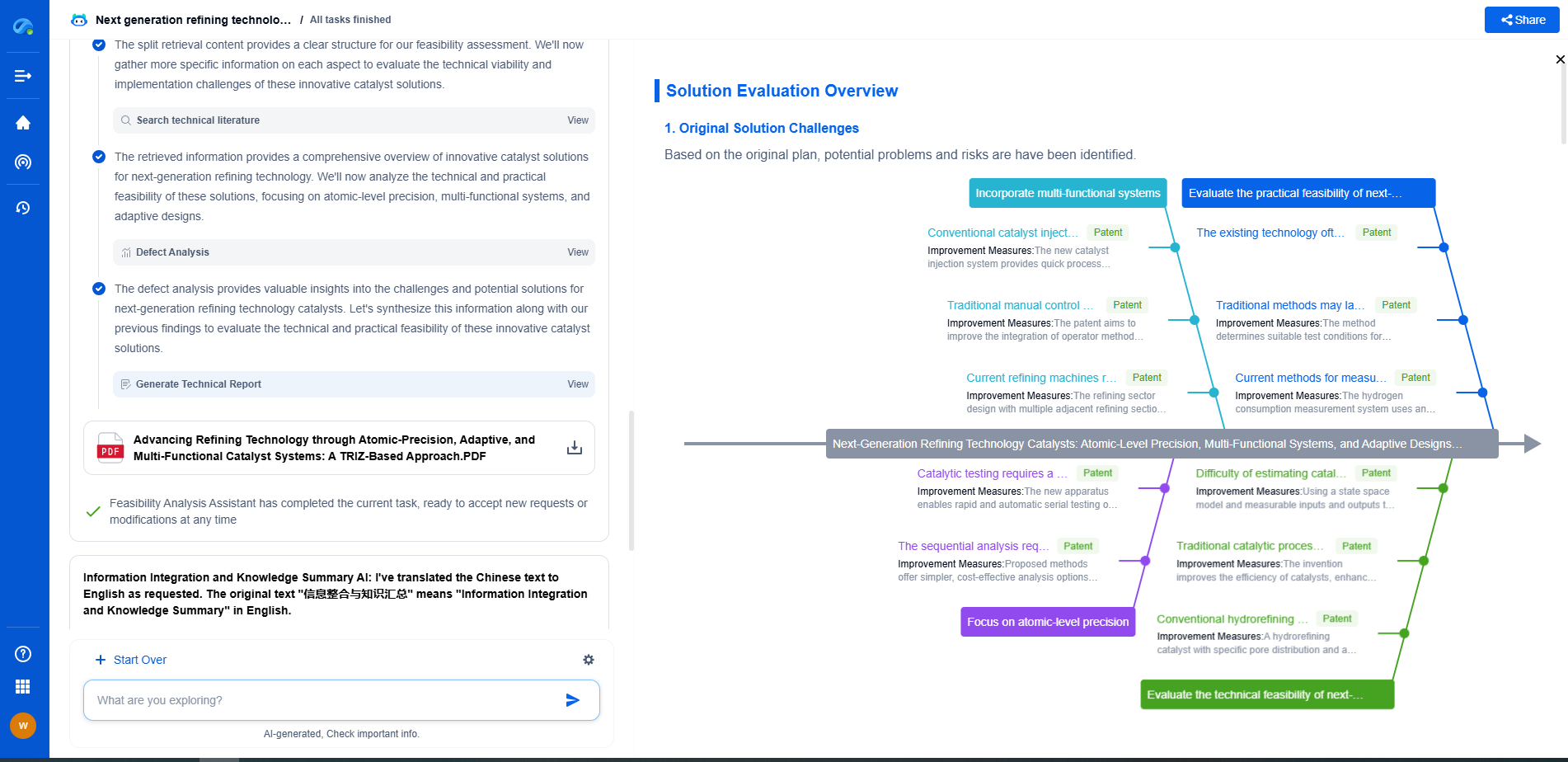What is ISO 10218 and why is it important in robot safety?
JUN 26, 2025 |
ISO 10218 is an international standard that plays a pivotal role in the realm of industrial robotics. It specifically focuses on the safety requirements for industrial robots, ensuring that both the robots themselves and the environments in which they operate are secure for human workers. The standard is divided into two parts: ISO 10218-1, which deals with the robots themselves, and ISO 10218-2, which addresses the integration and installation of robotic systems.
The Growing Need for Robot Safety Standards
With the rapid advancement of technology, the use of industrial robots has become increasingly prevalent across various sectors, including manufacturing, automotive, and electronics. These robots are designed to perform tasks that are often repetitive, precise, and potentially hazardous for human workers. While this automation brings about increased efficiency and productivity, it also introduces new safety challenges. This is where ISO 10218 becomes crucial. By establishing comprehensive safety guidelines, this standard aims to reduce the risks associated with robotic operations, thereby protecting employees and minimizing the likelihood of accidents.
Key Components of ISO 10218
ISO 10218-1 focuses on the design and construction of robots. It outlines the essential safety requirements that manufacturers must adhere to when developing robotic systems. This includes ensuring that the robots are equipped with adequate safeguards, such as emergency stop functions, protective measures to prevent unintended operation, and clear warning signals. The standard also emphasizes the importance of conducting thorough risk assessments to identify potential hazards and implement necessary control measures.
ISO 10218-2, on the other hand, addresses the integration of robotic systems into industrial settings. It covers aspects such as the installation, commissioning, and maintenance of these systems. This part of the standard ensures that the entire robotic system, including peripheral devices and equipment, complies with safety requirements. It also provides guidelines for user training and the development of operating procedures, ensuring that personnel can safely interact with and maintain the robotic systems.
Why ISO 10218 Matters in Today's Industrial Landscape
The significance of ISO 10218 extends beyond merely fulfilling regulatory requirements. For businesses, adhering to this standard is a strategic decision that can have far-reaching benefits. First and foremost, it helps prevent workplace accidents and injuries, which can have severe consequences not only for the affected individuals but also for the organization's reputation and financial standing. Compliance with ISO 10218 can also lead to increased efficiency, as a well-integrated and safe robotic system is less likely to experience downtime due to accidents or malfunctions.
Furthermore, obtaining certification under ISO 10218 can enhance a company's credibility and competitiveness in the global market. As more businesses and industries adopt automation, demonstrating a commitment to safety through compliance with international standards can be a key differentiator. It signals to clients, partners, and stakeholders that the organization prioritizes safety and is proactive in mitigating risks associated with robotic operations.
The Future of Robot Safety and ISO 10218
As technology continues to evolve, so too will the standards governing its use. ISO 10218 is not static; it is subject to periodic reviews and updates to address emerging challenges and incorporate new technological advancements. This ensures that the standard remains relevant and effective in promoting safety within the rapidly changing landscape of industrial robotics.
In conclusion, ISO 10218 is a vital component of the modern industrial sector, offering a framework that ensures the safe design, integration, and operation of robotic systems. By adhering to this standard, businesses can protect their workforce, enhance operational efficiency, and strengthen their competitive edge in the marketplace. As we look to the future, the importance of robust safety standards like ISO 10218 will only continue to grow, shaping the way industries leverage automation to their advantage.
Ready to Redefine Your Robotics R&D Workflow?
Whether you're designing next-generation robotic arms, optimizing manipulator kinematics, or mining patent data for innovation insights, Patsnap Eureka, our cutting-edge AI assistant, is built for R&D and IP professionals in high-tech industries, is built to accelerate every step of your journey.
No more getting buried in thousands of documents or wasting time on repetitive technical analysis. Our AI Agent helps R&D and IP teams in high-tech enterprises save hundreds of hours, reduce risk of oversight, and move from concept to prototype faster than ever before.
👉 Experience how AI can revolutionize your robotics innovation cycle. Explore Patsnap Eureka today and see the difference.
- R&D
- Intellectual Property
- Life Sciences
- Materials
- Tech Scout
- Unparalleled Data Quality
- Higher Quality Content
- 60% Fewer Hallucinations
Browse by: Latest US Patents, China's latest patents, Technical Efficacy Thesaurus, Application Domain, Technology Topic, Popular Technical Reports.
© 2025 PatSnap. All rights reserved.Legal|Privacy policy|Modern Slavery Act Transparency Statement|Sitemap|About US| Contact US: help@patsnap.com

